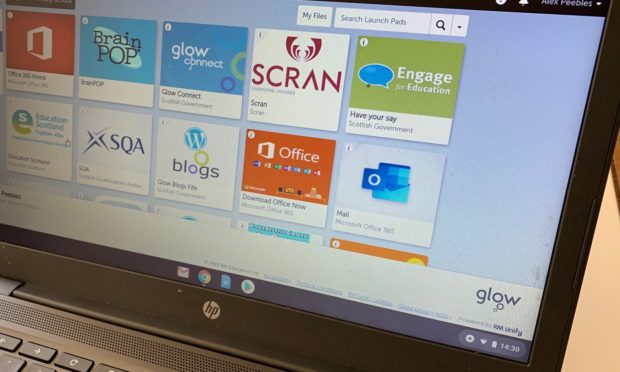More than half of Fife’s secondary pupils and one in four primary pupils were not engaging with schools’ home learning at the end of April.
Figures compiled by Fife Council showed participation rates of 42% for secondary school pupils and 77% for primary school pupils in the last week of April.
Engagement was lowest, 39%, in schools in the Auchmuty and Viewforth high school catchment areas in Glenrothes and Kirkcaldy and highest, 84%, in Dunfermline and St Columba’s high school catchments.
However, by the middle of May the proportion of pupils engaging had risen to 63% at secondary level and 81% at primary.
While schools are closed during the coronavirus pandemic teachers are issuing work for children to do at home and communicating with them using systems including the Scottish schools national intranet, GLOW.
Engagement, the council said, had increased but further improvement was needed and teachers were supporting families where barriers were identified.
However, Fife councillor Linda Holt, the parent of a high school pupil, said: “I shudder to think how far missing three months of schooling has set back Fife’s pupils.”
The independent member for East Neuk and Landward welcomed information provided to councillors from the education service but said it remained unclear what engagement constituted.
She said: “It could be as little as opening a book once or a single online assignment.”
She also said there was no analysis of the impact of prolonged social isolation on children and teenagers.
The report, which was seen by The Courier, said lack of IT availability or skills was the biggest barrier to engagement.
Some parents had also chosen to do their own home schooling or focused on wellbeing rather than education.
Pupil motivation, parents working from home, additional support needs and stress, anxiety and illness within families were further factors.
The report said devices and IT advice had been provided to some families and work undertaken with O2 to provide 4G WiFi hotspots where broadband was poor.
Further support by phone calls, text and email had also been given to some families and more individual work planned.
Shelagh McLean, head of education, said: “I’m immensely proud of the way our teachers have risen to the challenges we’ve faced over the last few months and the improving levels of engagement that we see our pupils enjoying as they learn at home.
“We’re all learning over the course of this crisis – virtual classrooms are now the new normal – and it’s testament to huge efforts by staff and parents that children are continuing their learning in this way.”










